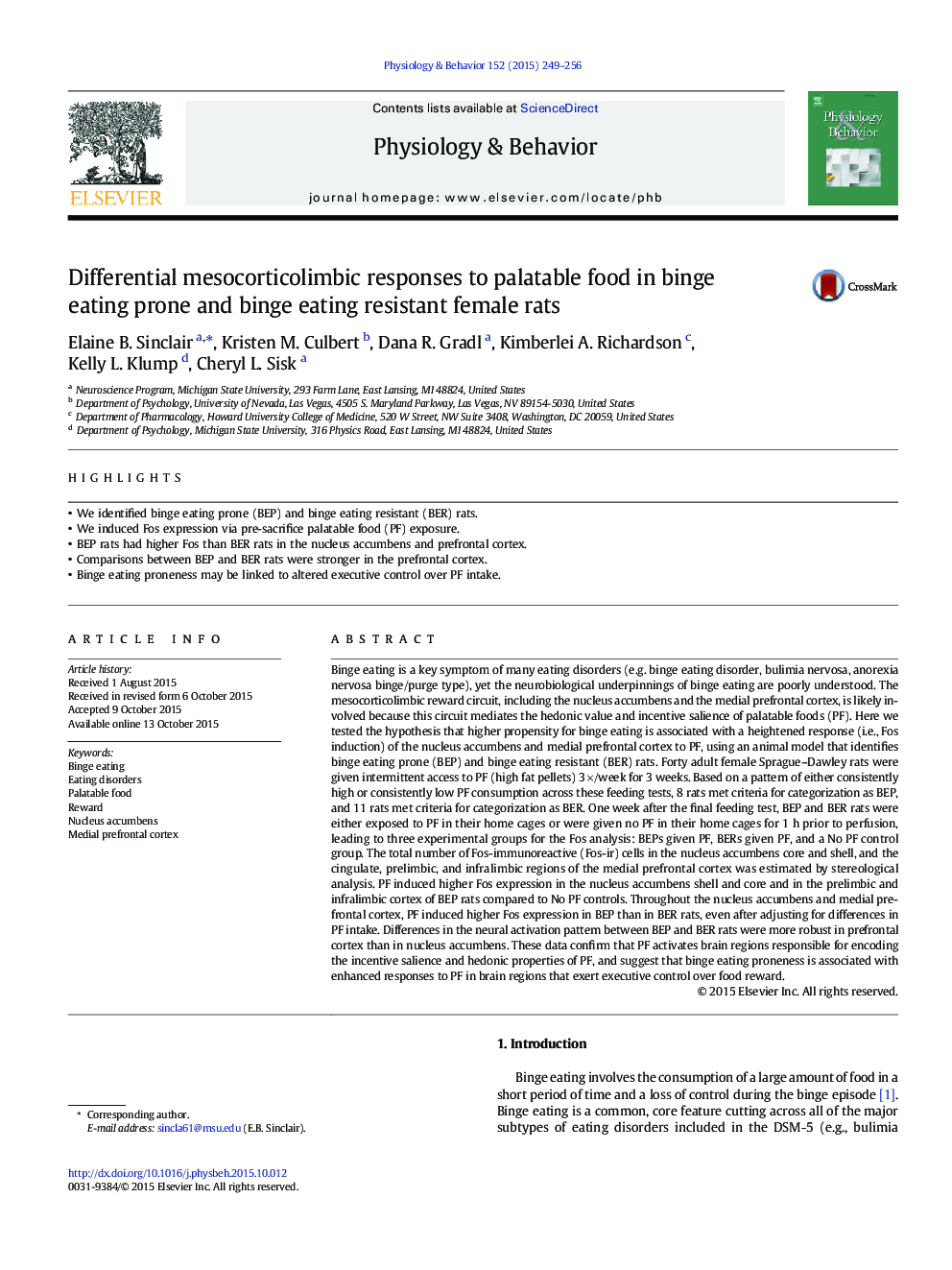| کد مقاله | کد نشریه | سال انتشار | مقاله انگلیسی | نسخه تمام متن |
|---|---|---|---|---|
| 5923092 | 1166292 | 2015 | 8 صفحه PDF | دانلود رایگان |

- We identified binge eating prone (BEP) and binge eating resistant (BER) rats.
- We induced Fos expression via pre-sacrifice palatable food (PF) exposure.
- BEP rats had higher Fos than BER rats in the nucleus accumbens and prefrontal cortex.
- Comparisons between BEP and BER rats were stronger in the prefrontal cortex.
- Binge eating proneness may be linked to altered executive control over PF intake.
Binge eating is a key symptom of many eating disorders (e.g. binge eating disorder, bulimia nervosa, anorexia nervosa binge/purge type), yet the neurobiological underpinnings of binge eating are poorly understood. The mesocorticolimbic reward circuit, including the nucleus accumbens and the medial prefrontal cortex, is likely involved because this circuit mediates the hedonic value and incentive salience of palatable foods (PF). Here we tested the hypothesis that higher propensity for binge eating is associated with a heightened response (i.e., Fos induction) of the nucleus accumbens and medial prefrontal cortex to PF, using an animal model that identifies binge eating prone (BEP) and binge eating resistant (BER) rats. Forty adult female Sprague-Dawley rats were given intermittent access to PF (high fat pellets) 3Â Ã/week for 3Â weeks. Based on a pattern of either consistently high or consistently low PF consumption across these feeding tests, 8 rats met criteria for categorization as BEP, and 11 rats met criteria for categorization as BER. One week after the final feeding test, BEP and BER rats were either exposed to PF in their home cages or were given no PF in their home cages for 1Â h prior to perfusion, leading to three experimental groups for the Fos analysis: BEPs given PF, BERs given PF, and a No PF control group. The total number of Fos-immunoreactive (Fos-ir) cells in the nucleus accumbens core and shell, and the cingulate, prelimbic, and infralimbic regions of the medial prefrontal cortex was estimated by stereological analysis. PF induced higher Fos expression in the nucleus accumbens shell and core and in the prelimbic and infralimbic cortex of BEP rats compared to No PF controls. Throughout the nucleus accumbens and medial prefrontal cortex, PF induced higher Fos expression in BEP than in BER rats, even after adjusting for differences in PF intake. Differences in the neural activation pattern between BEP and BER rats were more robust in prefrontal cortex than in nucleus accumbens. These data confirm that PF activates brain regions responsible for encoding the incentive salience and hedonic properties of PF, and suggest that binge eating proneness is associated with enhanced responses to PF in brain regions that exert executive control over food reward.
Journal: Physiology & Behavior - Volume 152, Part A, 1 December 2015, Pages 249-256